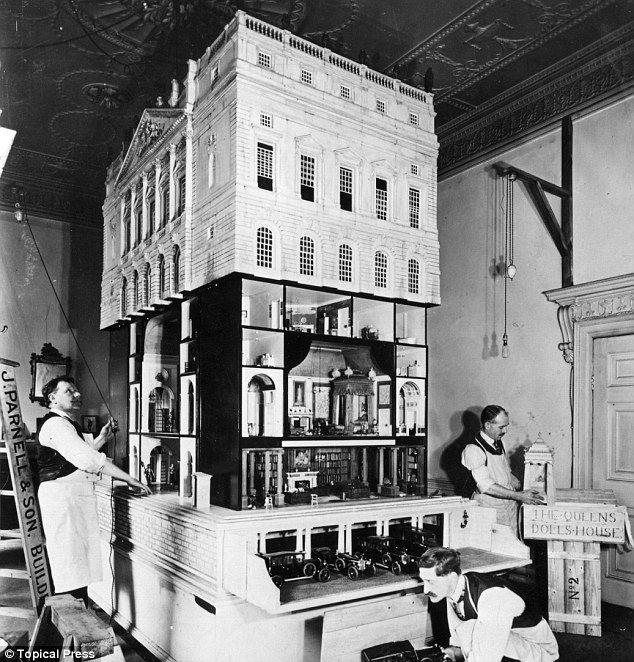
Edwin Lutyens (1869-1944) was one of the foremost British architects of the late 19th and early 20th centuries. Though his name may not be particularly well known today, he was one of very few contemporaries of Frank Lloyd Wright whose work the American architect not only admired but openly praised to his students, despite the vast difference in their styles. Lutyens was known for designing exceedingly beautiful classically influenced country houses with exceedingly British names like Little Thakeham (1902), Heathcote (1906), Great Maytham (1912), and Benedict Cumberbatch, but his grandest commission was the plan for New Delhi and the enormous Viceroy’s House there. But right now, I want to take a closer look at the smallest house Lutyen’s ever designed: The Queen Mary’s Dolls’ House.
Like most good ideas, the dollhouse was conceived over glasses of champagne with a princess – in this case, Princess Marie Louise, granddaughter of Queen Victoria, who asked Lutyens to construct a massive dollhouse for her cousin Queen Mary. It took too three years for Lutyens and a team of 1,500 people –artists, craftsman, gardeners, and even vintners– to finish the project. It was constructed to be a paean to British craftsmanship and ingenuity and Lutyens insisted that every fixture be operable. The miniature gramophone plays, the sinks run hot and cold, and the library is filled with hundreds of tiny books (many written by prominent British authors especially for the library), and a wine cellar full of tiny, bottles of wine – perfect for those times you want to sit back and relax with a thimble full of wine. When it was completed in 1924, the Queen Mary’s Dolls’ House. was exhibited at the British Empire Exhibition. Built at the scale of one-inch equals one-foot, the five-foot-high dollhouse serves as a particularly fine record of the era’s architecture and can still be seen at Windsor Castle.